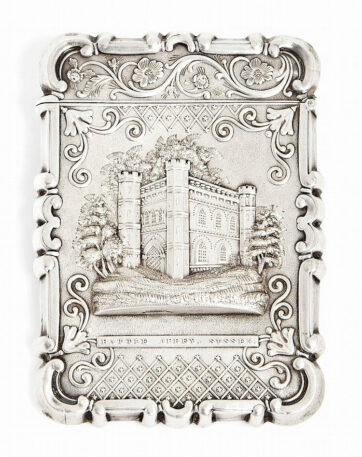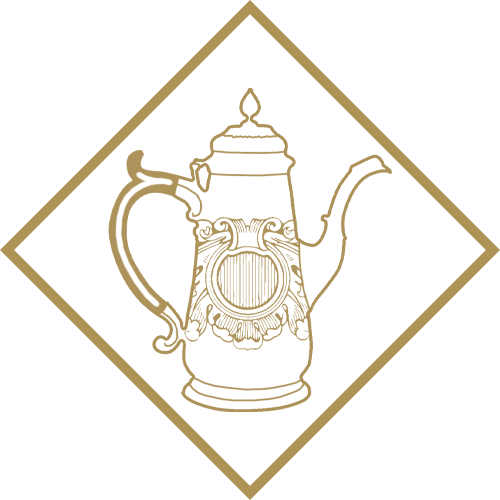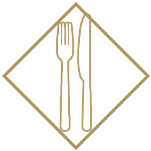The Ultimate Guide To Selling Antique German Silver
German silver has a rich tradition and its own unique forms. Use this guide as your starting point to find out more about your piece of German silver or just to learn more about the forms and fashions prevalent through the 17th and 18th centuries.
We can advise on the value of your silver and provide advice about how to sell it. Use the contact form at the bottom of the page to get in touch.

What Is Your Silver Worth?
How To Sell: Auction or Private Sale?
Mark Littler Ltd. are one of the only independent advisers in the antique industry. We offer trusted, independent advice to help you sell your silver for the highest possible price.
Selling at an auction might provide your silver with greater exposure. However, with a combined average of 45% in gross buyers’ and sellers’ fees, this approach might prove to be a false economy.
Conversely, finding a private buyer for your silver through our services could net you 33% more than if you sold it via auction, as our fees are only 12%.
What We Do For You
Simply fill in your contact details below and you will get an automatic referral to a leading silver auction expert who will give you an auction estimate and advise on how to sell with them. We will also see if we are able to get any offer from our private clients.
If we get any offers we will send these within 7 days. All offers are without obligation and there are no fees to pay us if you decide to sell at auction.
Silver Valuation Tips
To get the most accurate valuation of your silver simply ensure you provide the following information:
- What condition is your silver in? Let us know if there are and dents or heavy scratches in the silver.
- How heavy is your item? Please provide a measurement in grams if you can as this helps us determine the gauge of the silver. For instance a silver teapot can weigh as much as 1,000g or as little as 250g. Outwardly the design may look identical but the gauge of the silver is much heavier. This is important as items made from a better gauge of silver were often made by better makers for the upper classes, and as such will have a big impact on the value.
- PROVENANCE! Who owned your item before you did? Is there an interesting presentation inscription on your item that might shine light into it’s former life?
Important Note: this is a valuation service and not a hallmark identification service. Please see this page to learn how to read your hallmarks.
Free Expert Silver Valuations
Use the form below or send images of your silver to be connected with a silver expert.
Get In Touch With A Silver Specialist
"*" indicates required fields
German silver
German silver has a rich tradition and its own unique forms. Use this guide as your starting point to find out more about your piece of German silver or just to learn more about the forms and fashions prevalent through the 17th and 18th centuries.
We can advise on the value of your silver and provide advice about how to sell it. Use the contact form at the bottom of the page to get in touch.
German silver in the 17th Century
Following the 30 years war in 1648 there was a period of intense hardship. There was great rivalry amongst lesser princes which fueled ostentatious displays of silver. Almost all of plate was partial or fully gilt.
In the 17th century no real new designs of German silver were developed and towards the end of the century French styles became fashionable. The main reason for this is the influx of Huguenots from France who were being persecuted follwing the edict of Nantes in 1685.
The skill of the Germans silversmiths was consistently high, and they showed preference towards repouse or chased decoration. This can be witnessed with the high level of detail, especially on drinking vessels.

Types of German silver drinking cups
Throughout the 17th century it was customary to give drinking cups on special occasions. The main types of cups are as follows:
Riesenpokal – 40” high, only for display
Ananaspokal – pineapple cup
Dopelpokal – double cup, given to women
The sides of German silver tankards are often chased with Biblical or mythological scenes.
German silversmiths also used mounted cornelian, chalcedony, agate, mother of pearl, ivory, stoneware and faince. The Masster of this art was Johann Melchior Dinglinger and Ausburg was the centre of this style.
The true mster of this art was Johann Melchior Dinglinger. The main centre for this type of German silver was Ausburg.

18th century German silver
Friedrick The Great (1713-40) loathed the French but was a great patron of the arts and held a passion for gold and silver snuff boxes. Berlin was one of the main centres of production for these gold and silver snuffboxes.
The best snuffboxes were arguably made by Christian Neuber and Heinrich Taddel. One of the main reasons for the proliferation of gold snuff boxes was that the goldsmiths were almost unrivaled in the production of luxury gifts. This changed in 1710 following the opening of the Meissen porcelain works.
The styles in 18th century German Silver
18th-century German silver is often decorated with foliage and scroll work, stylised busts etc, and was mostly done by chasing or flat decoration; engraving only used for arms.
Rococo decoration was a popular style of German silver until 1780 – often in fluid extravagance. It is unusual too that there are almost no Neo Classical works, oten examples of an international style rather than an adaption and use of the style. There was a notable decline in quality in the last few decades of the 18th century.
[Sassy_Social_Share]






























